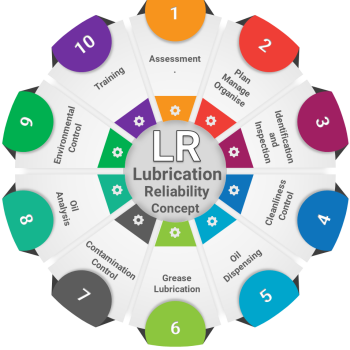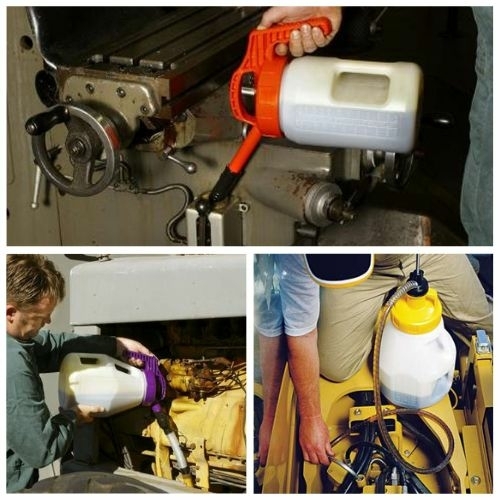Correct lubricant selection and storage are only part of the equation. The way lubricants are dispensed and transferred from storage to the point of use plays a critical role in maintaining their cleanliness, integrity and effectiveness. A reliable lubrication programme must ensure that lubricants remain free from contaminants at every stage of handling.
Step 5:
Lubricant dispensing and transfer
Step 5:
Lubricant dispensing and transfer

Why is proper lubricant transfer so important?
What does clean transfer actually look like?
Clean lubricant transfer involves a sealed, closed-loop process where the lubricant is protected from environmental exposure. This typically includes the use of:
- Dedicated and clearly labelled transfer containers for each lubricant type
- Sealed or pressurised dispensing systems to avoid airborne contamination
- Colour-coded or tagged equipment to prevent cross-contamination between products
- Filtering the lubricant during transfer to remove any potential contaminants
"Can I just use a funnel and open containers?"
Using open containers or common funnels is one of the fastest ways to compromise lubricant quality. These tools expose the lubricant to airborne particles, dirt, and moisture — especially in industrial environments. A closed, sealed transfer system with filtration capabilities is far more effective at keeping lubricants clean and maintaining their intended performance properties.
Setting up best-in-class transfer systems
Choose the right lid for every lubricant task
A well-designed lubricant transfer system is only as good as the components that support it. As you’ve seen in the video, precision and cleanliness are crucial when dispensing lubricants. To achieve this level of control, the right tools are essential; and OilSafe® lids are a key part of that strategy.
Each lid type is purpose-built to meet a specific dispensing need, helping you reduce the risk of contamination and cross-use. In the link below, you’ll find an overview of the five OilSafe® lids, their applications, and how they support a clean, reliable lubrication process.
Training and procedures are just as vital
Even the best equipment won’t deliver results if it’s used improperly. All maintenance personnel should be trained in lubricant handling procedures, including:
How to read and follow lubricant identification systems
Proper use of dispensing and transfer equipment
The importance of cleanliness and cross-contamination prevention
Standardised operating procedures should be created and enforced to ensure consistency, regardless of who is performing the task.
Filtration:
A step not to skip
Filtration during transfer helps:
Reduce abrasive wear and component failures
Improve oil cleanliness levels to ISO 4406 targets
Extend equipment life and reduce downtime
Measuring success: What does ‘reliable’ dispensing look like?
What does ‘reliable’ dispensing look like?
Reliable dispensing and transfer is not just about compliance or visual cleanliness; it’s about measurable improvement. Organisations that adopt clean, filtered transfer systems typically see:
Fewer lubricant-related equipment failures
Better control of lubricant usage
Reduced lubricant waste and disposal costs
Improved safety and environmental compliance



